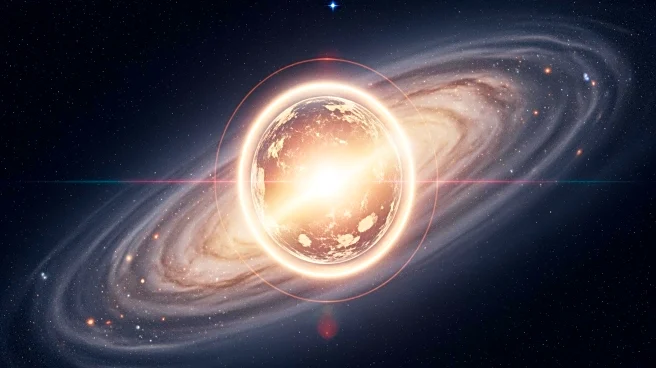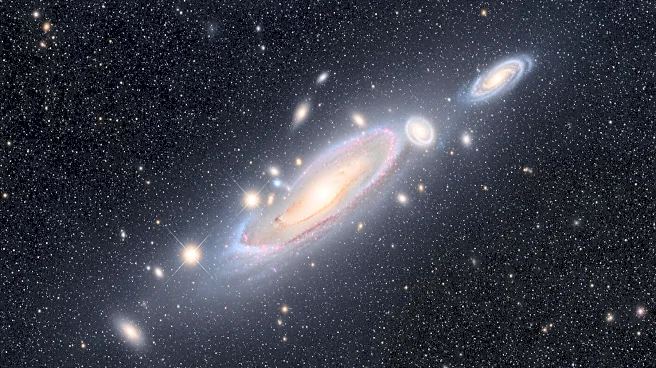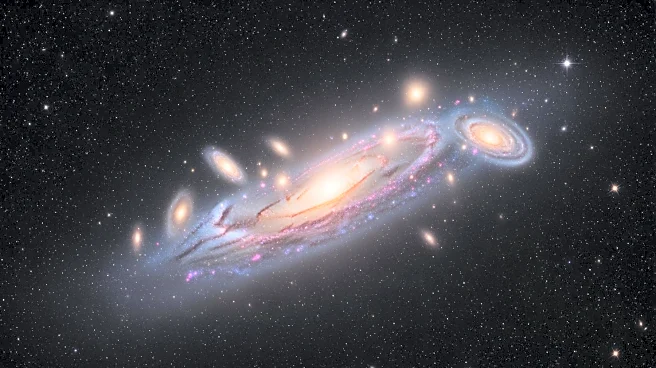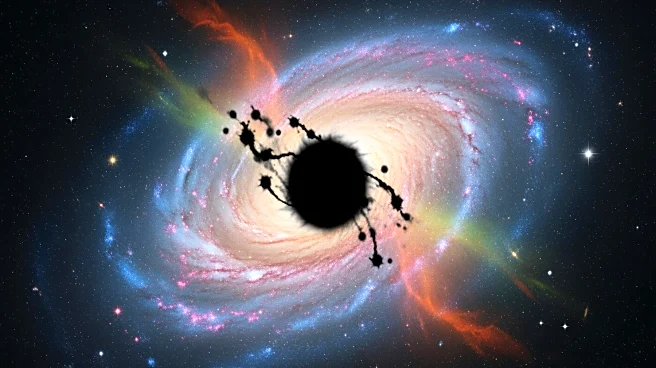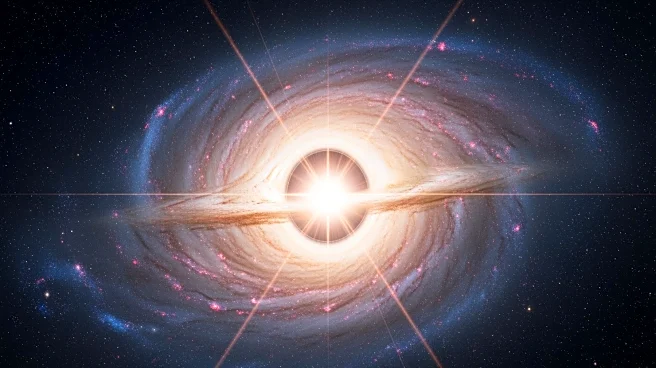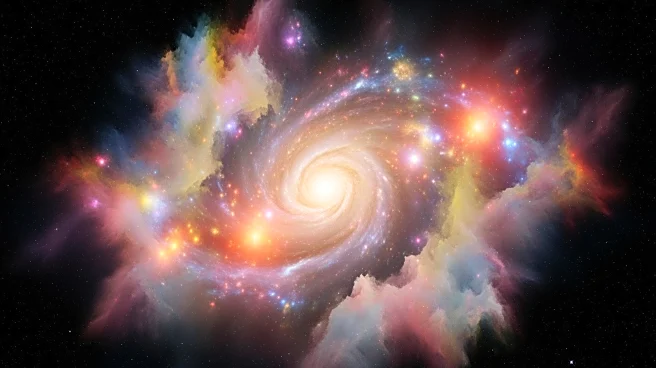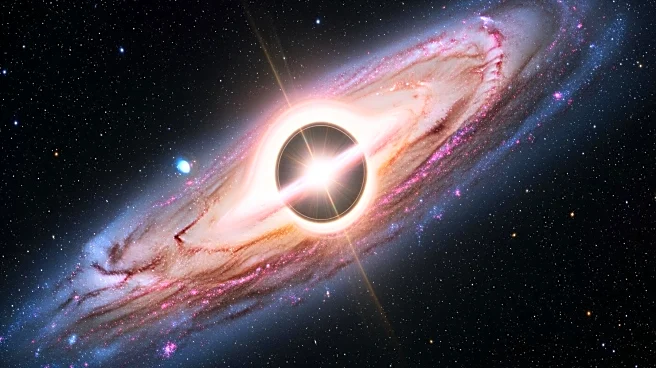What's Happening?
A recent study has proposed a significant shift in the understanding of cosmic expansion, suggesting that the universe may be slowing down rather than accelerating. This research, led by Professor Young-Wook
Lee from Yonsei University, challenges the prevailing notion that dark energy is causing the universe to expand at an increasing rate. The study focuses on Type Ia supernovae, which have been used as standard candles to measure cosmic distances and expansion rates. By analyzing the brightness of these supernovae in relation to the age of their host galaxies, the researchers found that older galaxies tend to produce brighter supernovae, while younger ones are dimmer. This age-related brightness variation could imply that the universe's expansion is decelerating, marking a potential paradigm shift in cosmology.
Why It's Important?
The implications of this study are profound for the field of cosmology. If the universe is indeed slowing down, it could alter the understanding of dark energy and its role in cosmic expansion. This challenges the current model that has been widely accepted since the discovery of dark energy nearly three decades ago. The findings could impact future research directions and the interpretation of cosmic phenomena, potentially leading to new theories about the universe's fate. For scientists and researchers, this study opens up new avenues for exploring the dynamics of cosmic expansion and the factors influencing it, which could reshape the foundational principles of cosmology.
What's Next?
Further research is needed to confirm these findings and explore their implications. Upcoming projects, such as the Rubin Observatory's survey and the Roman Space Telescope, are expected to provide more data on supernovae and their host galaxies. These facilities will enable scientists to measure galaxy ages more accurately and test the age-related brightness variation across a larger sample. If the trend persists, it could become a standard factor in cosmic distance measurements, similar to current corrections for color and light-curve width. This could lead to a revised understanding of the universe's expansion and the role of dark energy.
Beyond the Headlines
The study highlights the importance of considering the age of stellar populations in cosmological measurements, which has been overlooked in previous analyses. This age factor could introduce systematic errors in the Hubble diagram, affecting the perceived rate of cosmic expansion. By accounting for these age-related variations, researchers can refine their models and improve the accuracy of distance measurements. This approach underscores the complexity of cosmic phenomena and the need for nuanced models that incorporate diverse factors influencing the universe's behavior.
